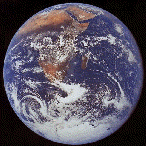
In each chapter we will present a selected set of Internet resources which directly relate to the contents of each chapter.
Internet Resources
" In the early 1960s, the emergence of the theory of plate tectonics started a revolution in the earth sciences. Since then, scientists have verified and refined this theory, and now have a much better understanding of how our planet has been shaped by plate-tectonic processes. We now know that, directly or indirectly, plate tectonics influences nearly all geologic processes, past and present. Indeed, the notion that the entire Earth's surface is continually shifting has profoundly changed the way we view our world."
"Plate tectonics is a relatively new theory that has revolutionized the way geologists think about the Earth. According to the theory, the surface of the Earth is broken into large plates. The size and position of these plates change over time. The edges of these plates, where they move against each other, are sites of intense geologic activity, such as earthquakes, volcanoes, and mountain building. Plate tectonics is a combination of two earlier ideas, continental drift and sea-floor spreading. Continental drift is the movement of continents over the Earth's surface and in their change in position relative to each other. Sea-floor spreading is the creation of new oceanic crust at mid-ocean ridges and movement of the crust away from the mid-ocean ridges."
"The plates consist of an outer layer of the Earth, the lithosphere, which is cool enough to behave as a more or less rigid shell. Occasionally the hot asthenosphere of the Earth finds a weak place in the lithosphere to rise buoyantly as a plume, or hotspot. The satellite image below shows the volcanic islands of the Galapagos hotspot."
"Convergent Boundaries ... "Hot Spots" ... Plates ... Plate Tectonics ... "Ring of Fire"... Sea-Floor Spreading ... Spreading Ridges ... Subduction Zones ... Submarine Volcanoes ... "